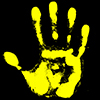I'm not much of a designer, much less when it comes to creatures, but I can offer a small crit for your presentation and some of the fundamental stuff that I think you could keep in mind or work on more for the next time
First off the presentation. Keep in mind this is my interpretation of presentation, I don't think there's a "correct" way to do it but there are things you can keep in mind.
I would direct you towards Feng Zhu's style of presentation (look at his videos designing things on a simple sheet of paper, check out how his students lay things out etc). Good clean presentation can go a long way to making a design feel better even if it's not great. Often times there will be simple lines running through the background to lead your around, to frame the designs on the sheet and to give it a sense of "completion". Putting in graphic shapes behind each design or behind groups of them, numbering/lettering them to refer to them easily and writing brief notes to help sell the function all help in that respect too, but if they're just thumbnails, lines and lettering would most likely do well.
Take a look at these galleries and also an example of a layout
FZD School perspective drawings
Creature sketches
Vehicle studies
Are there other variations on this creature? If you have more thumbnails or designs it would be a good idea to show them here as well. If not, well to be frank I don't think its a good idea to jump into colour variations so soon. In my opinion the colouring phase should be the last part of the process, especially if you're still not 100% comfortable with colour yet. At least then you will have a nice line drawing or a nice greyscale render to show in the event you need to show a design and you're not at the stage yet.
I'm not an expert on perspective however I do feel the foreshortening on the far wing/fin is off. if the creature is indeed only 6 feet long the foreshortening/scale is far too intense; at that scale they would be /almost/the same size. Watch out for the symmetry of the wings as well. You should essentially be able to lay a perspective grid over a symmetric creature and have it line up more or less, but at the moment it seems the fins are out of line. . If you're trying to show an action then you need to push that movement more, but I think you need to work out how to make the symmetry work well first before you can get to that. It works well on his head and the tilting of the spikes on his tail does a good job of showing the form there but the fins aren't working at the moment. Casting a shadow beneath your creature will also communicate the top view to your audience efficiently and simply, and for that reason I would also recommend using very simple top lighting to work out the forms easily there.
If you haven't already I highly suggest buying Scott robertson's "How to Draw" book and the soon to be released "How to Render" book. It covers /all/ the fundamentals you need to know about perspective, and the rules apply just as well to organic forms though somewhat looser! I've seen some of scott's rendering tutorials and they were excellent, so although I haven't read how to render yet I'm convinced it will be as great as his last book.
That brings me to your grayscale render. Are you familiar with the halfway to black rule? Its an excellent way to render matte surfaces, and from there you can expand it into more reflective surfaces. Basically its a rule of thumb that says that, for matte surfaces, the shadow side of an illuminated object (before any fill lights of reflected lights) is going to be halfway to black on the gray scale from the objects local value.
So if you have an object that's true value is 20% gray (or 2 on the value scale), then 10-2=8. 8/2=4, 2(local value)+4(halfway to black value)= 6. The shadow side for an object that's 2 on the value scale should be roughly 6, and the midtone would be between that, so 4. Its an excellent way to quickly knock out a concept in grayscale and I highly recommend it. Keep in mind its a starting point and not an absolute, so the values can shift slightly from there but its best to stay as near to those values as your design will allow you
Here's a picture that explains it visually
Hope that helps! Feel free to ask questions if I wasn't clear (it happens a lot lol)










